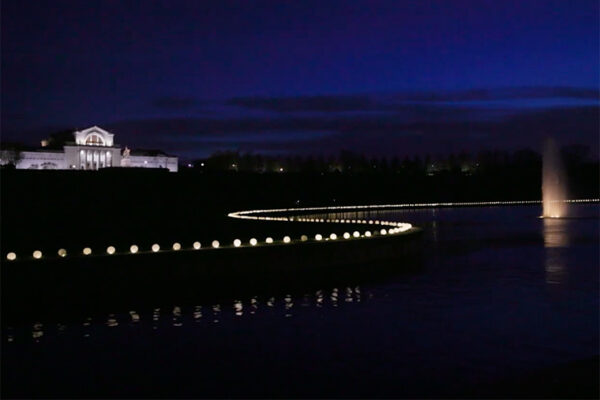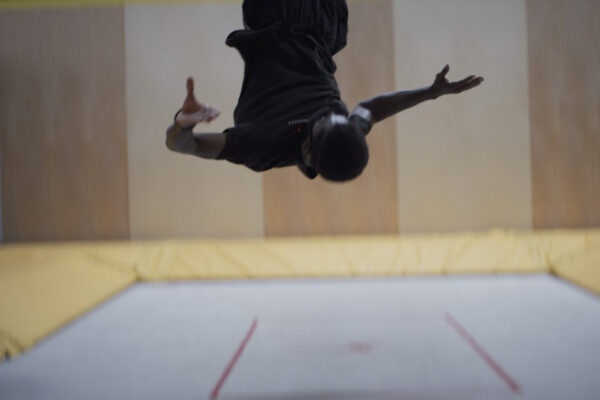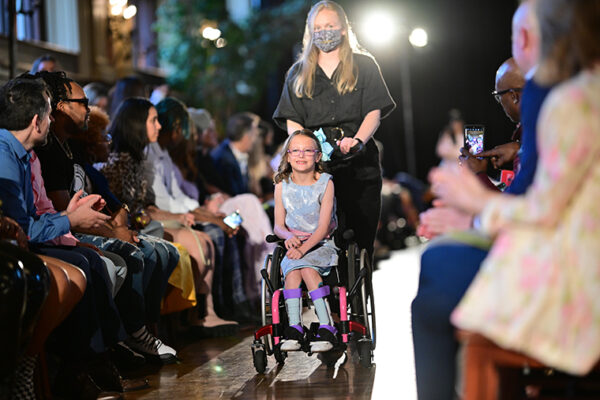
St. Louis has never known what to do with the River des Peres.
A linchpin of local stormwater management, the river winds roughly 18 miles from the western suburbs of Creve Coeur and Normandy to its Mississippi confluence just south of Carondelet Park. Yet for more than a century, the “River Despair” has been treated with environmental and aesthetic disdain. Large swaths have been channelized, covered and redirected into sewage pipes.
Now a public art installation by students at the Sam Fox School of Design & Visual Arts at Washington University in St. Louis is exploring both the river’s infrastructural legacy and those moments of natural beauty that stubbornly, improbably survive.
“The River des Peres is a dynamic site that has impacted University City in both positive and, sometimes, more troublesome ways,” said project adviser Meghan Kirkwood, assistant professor and photography area coordinator.
“It’s also a site that lends itself to a variety of interpretations,” Kirkwood added. “The students were very interested in the form of the river and the ways it interfaces with both the history of St. Louis and community spaces in University City.”
See also: Michael Allen on the history of River des Peres

Presented under the auspices of the University City Public Art Series, a collaboration that dates back to 1986, the project comprises 12 lenticular photographs by nine graduate and undergraduate students. Located just south of Centennial Commons, the images encircle a wooded, roughly quarter-mile stretch that — with its pebbled bed, meandering path and chirping wildlife — offers a rare glimpse of the river’s presettlement condition.
Lenticular photos, like 19th-century stereoscope cards, create an illusion of depth by optically merging two different images. But where stereoscopes place those images side-by-side, lenticular photos are layered, with one image printed on conventional backing and the other on laminated plastic. Once combined, the images seem to switch back and forth as the viewer moves.
Lou Friedman deploys this illusionism to shrewd effect. His piece presents an unruly landscape, dense with branches, that is interrupted by a large sign warning of potential sewage outflow — a sign that fades and reappears with every step.
In an artist’s statement, Friedman noted that despite environmental challenges, “the River des Peres moves stealthily throughout University City and carves out secret little areas of beautiful outdoor space. In this project, I aimed to represent the juxtaposition between the beauty I saw in front of me while photographing on site and the knowledge I had about the state of the river.”
Nina Huang layers original photos taken along U City’s Ruth Park Trail with archival images from Missouri history. Terry Rim explores the visual similarity between river pebbles and coins in a fountain. Yuanyuan He fills a winding path with glittering butterflies. Sophie Devincenti slyly contrasts the river’s modest flow with ornate Gilded Age ambitions.
Haejin An reimagines the river as a kind of fairytale landscape, bursting with trees, flowers and colorful, if ghostly, figures. She noted that the lenticular format’s constantly shifting perspective “supports the idea of seeing the unseen and allows the print to function as a portal.”
An’s work also incorporates a pair of warning signs, highlighting the ongoing tensions between observable nature and our perceptions of it. Yet despite decades of neglect, An argues that the River des Peres still “has the potential to be beautiful.
“Even after a history of environmental abuse,” An added, “nature persists.”
Slideshow












About the University City Public Art Series
Launched in 1986, the University City Public Art Series is the longest-running public art partnership between a university and a municipality in the United States. To date, the series has featured more than 200 pieces of temporary art by WashU students. Some of these have even become permanent fixtures in the University City landscape, such as “The Rain Man” fountain in the Delmar Loop.
The 2022 series remains on view through Aug. 29. It is sponsored by the University City Municipal Commission on Arts and Letters and the Sam Fox School’s Office for Socially Engaged Practice, with support from the Gephardt Institute for Civic and Social Engagement; Martin Lammert; the University City Department of Parks, Recreation and Forestry; Garrie Burr, John Tieman and Mike Warmbold; Wilmetta Toliver-Diallo; Liz Kramer; and Audra Hubbell.
For more information about the series, visit samfoxschool.wustl.edu. For more information about restoration efforts, visit riverdesperes.org.


